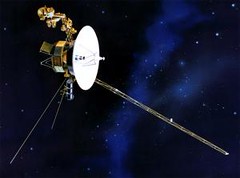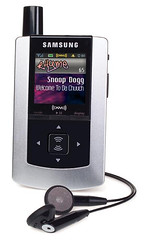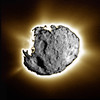Last week I was reading an article on the 2nd anniversary of the introduction of broadband Internet service on Lufthansa aircraft.
The online, in-flight service — which has proven so popular that Lufthansa is now offering it on nearly 80% of its long-haul flights — is provided by Connexion by Boeing (CbB). The CbB system uses geosynchronous satellites to connect to the Internet, with a Wi-Fi hotspot on the aircraft itself. SES AMERICOM plays a critical role in delivering the airborne internet; Connexion by Boeing utilizes our AMC-23 satellite to provide high-speed access to customers flying over the Pacific Ocean. (AMC-23 was designed and specified in conjunction with CbB to provide Ku-band coverage of major air routes across the Pacific Ocean).
That satellite connection — and SES is proud to play a role in delivering it — is changing the way people travel, and becoming a “must have” amenity for many business travelers. One recent study conducted by Boeing found that:
- 83 percent of those surveyed said that the availability of the Connexion by Boeing service will have an impact on future travel plans and their choice of airline carrier;
- 94 percent said they plan to use the service again on a future flight;
- 78 percent said that the service’s speed met or exceeded their expectations.
As for how people are using the service, the study found:
- 90 percent of respondents said they accessed their work e-mail, most of whom use a virtual private (corporate) network;
- 76 percent accessed their personal e-mail;
- 69 percent said they browsed the Internet;
- 41 percent engaged their friends and family via instant messaging or live chat applications.
Using IM and email to stay in touch with others while crossing the oceans is a great way to increase business productivity. But as I read the article and study about Lufthansa’s experience with Connexion by Boeing over the last two years, I was reminded of a personal experience I had on Lufthansa flight earlier this spring.
Because I travel so frequently, and I like to stay connected with “hometown” news, I purchased a Slingbox device. Slingbox enables you to tune in to your TV service at home via the Internet. On this occasion, I was flying on an overnight Lufthansa flight to Luxembourg via Frankfurt, and had gotten online using CbB.
Like most business travelers, I initially got online to check my work email, and I spent some productive time catching up on business matters. But then I had a thought — I wondered if I could use CbB to connect to my Slingbox and to try tuning in the news program — from 35,000 feet. It worked!
“Tuning in at home” while over the North Atlantic was made possible by many technologies — twice by satellite. First, the video signal was carried by an AMERICOM satellite and downlinked by a cable operator in New York. Then, an AMERICOM satellite was used to provide Internet service to the aircraft. In between, there are the new technologies: the Slingbox and CbB. Oh, and of course, there’s the Internet.
That, to me, is what is truly amazing about the combination of satellite technology with the Internet. Productivity is nice, but being able to sit back and relax with your favorite local programming while flying across time zones — that’s the type of future we’ve long imagined. And thanks to satellite technology, that future is here. This really is rocket science.

 It was recently announced that Voyager 2 has reached its more southerly edge, sooner than expected. It is now believed it will reach interstellar space at about 10.5 billion miles. This reveals that the heliosphere is not a sphere after all, but is more of a comet shape.
It was recently announced that Voyager 2 has reached its more southerly edge, sooner than expected. It is now believed it will reach interstellar space at about 10.5 billion miles. This reveals that the heliosphere is not a sphere after all, but is more of a comet shape.


